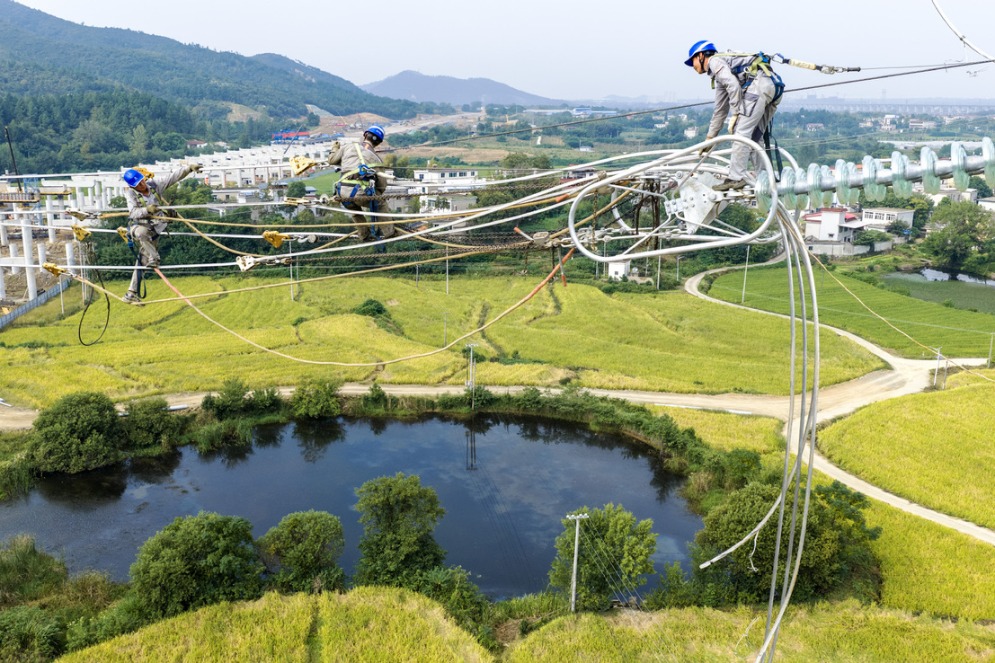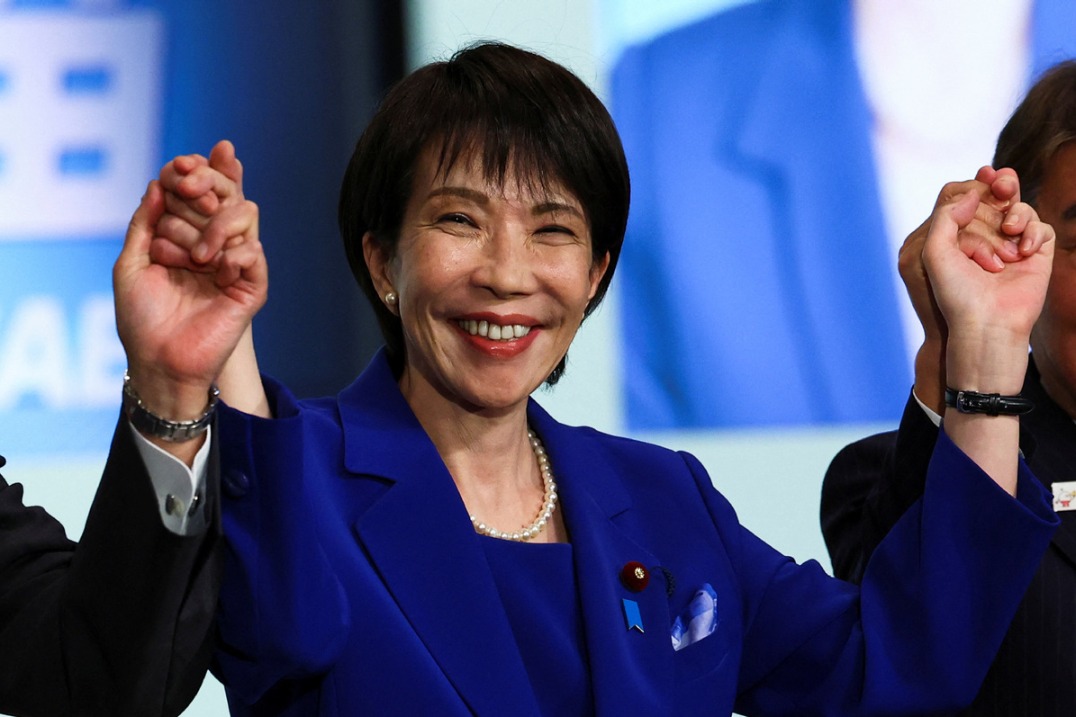Trade fulcrum
Seizing the new opportunities for cooperation and strengthening economic ties will help stabilize the Eurasian continent

Seizing the new opportunities for cooperation and strengthening economic ties will help stabilize the Eurasian continent

Central Asia can achieve more significant and faster progress in its development through coordinated and productive work with its neighbors.
First of all, Asia is emerging as a formidable hub of innovation and technology, solidifying its position as the epicenter of global economic power in the modern world. With a population larger than that of the rest of the world combined, the region is a true powerhouse.
The GDP of Asian countries has increased rapidly in a short span of time. Over the past decade, several Asian states have managed to move into the category of middle- and even high-income countries. This remarkable trajectory reflects the ongoing processes of industrialization, urbanization, the steady rise in labor productivity and the robust expansion of the corporate sector.
Asia holds more than half of the world's patents. The lion's share of these patents can be attributed to a select few countries, chiefly China, Japan and Republic of Korea. China, in particular, has demonstrated astonishing growth in this regard over the past decade.
The COVID-19 pandemic has accelerated the development of the e-commerce sector. Asia accounted for 51.1 percent of the global online retail sales revenue by the end of 2022. Countries in the region are leading in developing and implementing digital technologies, including robotics and e-commerce.
Today, the region is the "production center" of the world. About two-thirds of the world's industrial robots are used in Asia. China alone accounts for about 30 percent of the manufacturing robot market.
Second, Central Asia can become the driving force of Eurasian logistics. The current geopolitical and geo-economic situation not only presents it with serious challenges but also opens up immense opportunities.
In this regard, Kazakhstan views the Middle Corridor as a vital tool for developing interconnected relationships between Asia, Europe and the Middle East, with the Belt and Road Initiative being the primary driver for developing the Middle Corridor.
The Middle Corridor may soon become the powerhouse of Kazakhstan's transport and logistics industry. In a short period, the transit time from China to Europe has been reduced from 53 days to around 20 days, through the joint efforts of our countries. At the same time, the transit time through Kazakhstan has been halved — from 12 to six days. The aim is to reduce this to five days by the end of this year.
The volume of cargo transported through the Middle Corridor from January to June amounted to 1.3 million metric tons. That is 1.8 times more than during the same period of last year. It is expected that in the medium term, cargo transportation along the Middle Corridor will grow to 10 million tons per year.
Nonetheless, it is essential to remain vigilant and proactive. It is crucial that these corridors are transformed from mere transit routes into robust logistical and economic arteries. This transformation entails the creation of export-oriented joint ventures that target European and Middle Eastern markets.
Last year, Kazakhstan approved a corridor development road map with Georgia, Turkiye and Azerbaijan. It also established a joint logistics company with Azerbaijan, simplifying customs procedures. Joint logistics companies serve as the tool for corridor development, and they will expedite its progress.
Expectations are also high for the development of e-commerce. For instance, agricultural products from Kazakhstan are in demand in the Chinese market.
Recent volatility in the global food market underscores the importance of collaboration in this industry. Kazakhstan is keen on both expanding and diversifying its agricultural exports to neighboring countries. In line with this vision, President Kassym-Jomart Tokayev has proposed establishing a joint food hub with China, centered around the Khorgos International Trade Center.
Third, Kazakhstan and China play pivotal roles in maintaining regional stability. The cooperation between Kazakhstan and China, based on mutual respect for core interests, is crucial in ensuring regional stability.
One of the cornerstones of this cooperation is the shared commitment to noninterference in the internal affairs of sovereign states. Collaborative efforts within organizations such as the Shanghai Cooperation Organization and the Conference on Interaction and Confidence-Building Measures in Asia bolster trust among nations. They help shape a common agenda for preserving security and stability in our region.
Economic interdependence in trade, energy and infrastructure projects increasingly highlight the need to maintain a regional balance.
Joint projects between Central Asia and China represent investments in regional stability. China is the anchor economy of Asia. Expanding the BRI in the region will foster interdependence between Central Asia and China.
Contributing to the development of transport and logistics routes is the main direction that can give the necessary impetus for social and economic development.
China's experience in the industrial economy serves as an example for Kazakhstan as well. This year, Kazakhstan initiated a profound transformation of the country's economy, moving away from its dependency on natural resources, with the processing industry serving as the trendsetting link.
Domestic and foreign investors will be exempt from paying taxes and other mandatory payments for the first three years to support this industry. It is a significant step to attract companies ready to participate in developing an industrial economy in Kazakhstan.
Considering the stocks of raw materials and other reserves essential for producing electric cars, mobile devices, household appliances, drones, robots and other equipment, Kazakhstan aspires to build a 21st-century industrial economy. Hence, it is also interested in collaborating in the IT and artificial intelligence sector.
China's automotive industry has demonstrated impressive growth, reflected in the increasing popularity of Chinese vehicles both globally and in Kazakhstan. A notable trend is the establishing of joint ventures to manufacture automotive parts in Kazakhstan.
The primary requisite for building a stable Eurasian continent is finding new vectors for cooperation, creating joint ventures and strengthening economic ties.
To this end, it would be advantageous to expand the interactions among the scientific and expert circles of China and the Central Asian countries to form a mutual understanding of the existing problems and develop the most effective solutions to them.
The author is the director of the Kazakhstan Institute under the Republic of Kazakhstan. The author contributed this article to China Watch, a think tank powered by China Daily.
Contact the editor at editor@chinawatch.cn


































